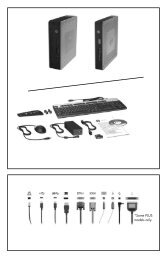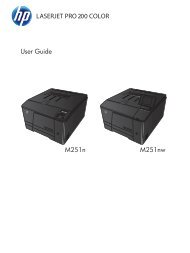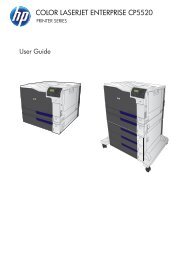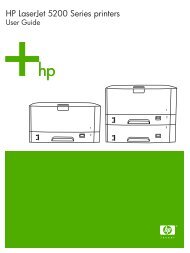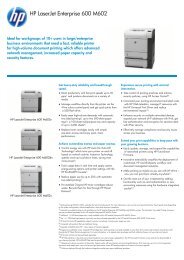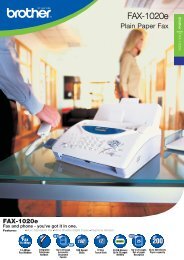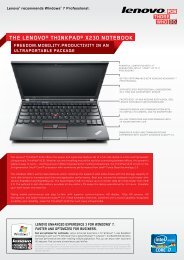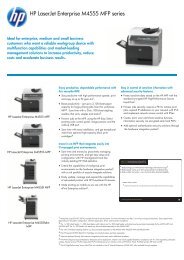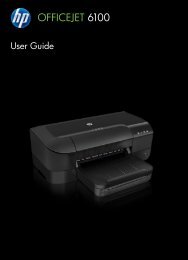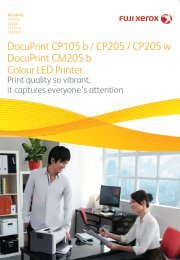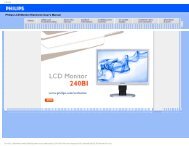User Manual
User Manual
User Manual
You also want an ePaper? Increase the reach of your titles
YUMPU automatically turns print PDFs into web optimized ePapers that Google loves.
Plugs and outlets<br />
If a receptacle (power outlet) that you intend to use with your computer equipment appears to be damaged<br />
or corroded, do not use the outlet until it is replaced by a qualified electrician.<br />
Do not bend or modify the plug. If the plug is damaged, contact the manufacturer to obtain a replacement.<br />
Do not share an electrical outlet with other home or commercial appliances that draw large amounts of<br />
electricity; otherwise, unstable voltage might damage your computer, data, or attached devices.<br />
Some products are equipped with a three-pronged plug. This plug fits only into a grounded electrical outlet.<br />
This is a safety feature. Do not defeat this safety feature by trying to insert it into a non-grounded outlet. If<br />
you cannot insert the plug into the outlet, contact an electrician for an approved outlet adapter or to replace<br />
the outlet with one that enables this safety feature. Never overload an electrical outlet. The overall system<br />
load should not exceed 80 percent of the branch circuit rating. Consult an electrician for more information<br />
if you have questions about power loads and branch circuit ratings.<br />
Be sure that the power outlet you are using is properly wired, easily accessible, and located close to the<br />
equipment. Do not fully extend power cords in a way that will stress the cords.<br />
Be sure that the power outlet provides the correct voltage and current for the product you are installing.<br />
Carefully connect and disconnect the equipment from the electrical outlet.<br />
External devices<br />
Do not connect or disconnect any external device cables other than Universal Serial Bus (USB) and 1394<br />
cables while the computer power is on; otherwise, you might damage your computer. To avoid possible<br />
damage to attached devices, wait at least five seconds after the computer is shut down to disconnect<br />
external devices.<br />
Heat and product ventilation<br />
Computers, power adapters, and many accessories can generate heat when turned on and when batteries<br />
are charging. Always follow these basic precautions:<br />
• Do not leave your computer, power adapter, or accessories in contact with your lap or any part of your<br />
body for an extended period when the products are functioning or when the battery is charging. Your<br />
computer, power adapter, and many accessories produce some heat during normal operation. Extended<br />
contact with the body could cause discomfort or, potentially, a skin burn.<br />
• Do not charge the battery or operate your computer, power adapter, or accessories near flammable<br />
materials or in explosive environments.<br />
• Ventilation slots, fans, and heat sinks are provided with the product for safety, comfort, and reliable<br />
operation. These features might inadvertently become blocked by placing the product on a bed, sofa,<br />
carpet, or other flexible surface. Never block, cover, or disable these features.<br />
Inspect your desktop computer for dust accumulation at least once every three months. Before inspecting<br />
your computer, turn off the power and unplug the computer's power cord from the electrical outlet; then<br />
remove any dust from vents and perforations in the bezel. If you notice external dust accumulation, then<br />
examine and remove dust from the inside of the computer including heat sink inlet fins, power supply vents,<br />
and fans. Always turn off and unplug the computer before opening the cover. If possible, avoid operating<br />
your computer within two feet of high-traffic areas. If you must operate your computer in or near a high-traffic<br />
area, inspect and, if necessary, clean your computer more frequently.<br />
© Copyright Lenovo 2012 vii



